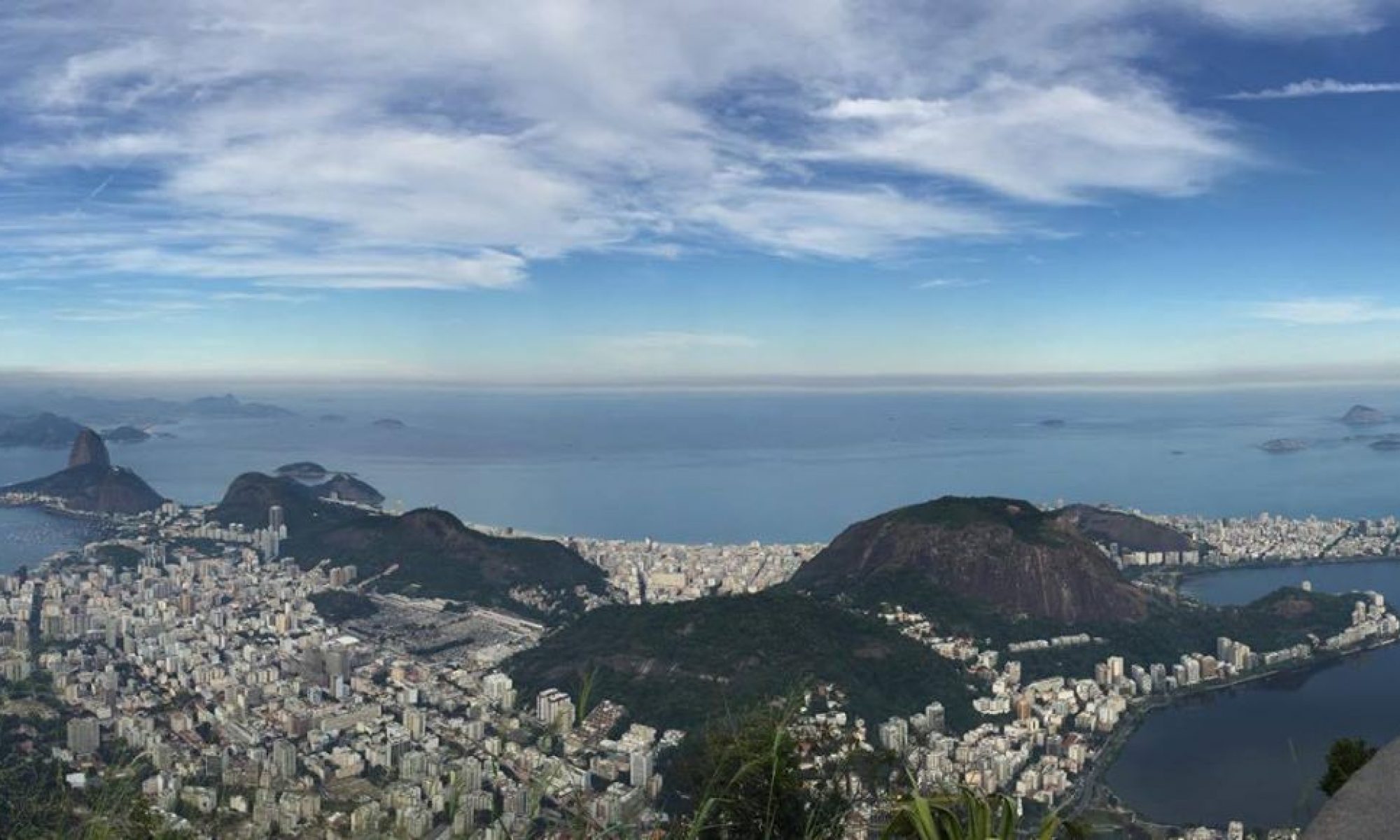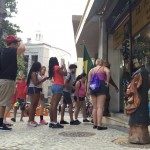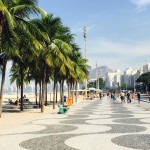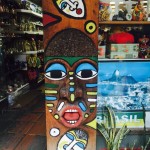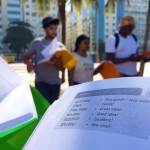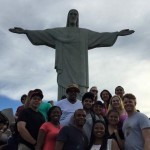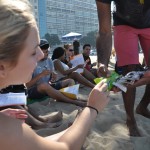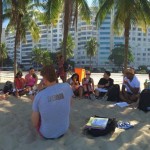May 26, 2015
By: Marley Pulz
Once we pulled out of the airport in Brazil, the first thing we saw was a palm tree. Our taxi drivers easily maneuvered through the busy night streets of Rio de Janeiro. We arrived to the hostel, named “El Misti House”, where we will be staying for the next week and a half. With twelve students and two professors, we sleep six to a room. Since we are only four blocks from the famous Copacabana beach, we decided to take a night stroll. We eventually found ourselves eating traditional Brazilian dishes: cheese, beef, and fished based dishes while looking out on the ocean. Surprisingly, the music playing at the eatery was very Americanized- Bruce Springsteen, The Killers, Lana Del Rey, and Michael Jackson. After eating, we retired to our hostel.
We woke for a 9am breakfast which consisted of; melon, papaya, bread, ham, cheese, coffee, cucumber water, and guava juice. Our first “activity” of the day was completing organizational business so we walked to the beach and sat for a few hours learning Portuguese and designating different blog entries to the students. While walking, we saw the sidewalks were very unique because they are cobblestone and set with white stones as the background and black stones that form a type of wave, this design has turned into a symbol of the city. For lunch we went to a nice restaurant named Rondinalla where most people shared a dish. The meals consisted heavily of meat, rice, and potato. It was delicious! As we ate, we were approached by numerous street vendors who sold items that ranged from jewelry and license plates to selfie-sticks. We saw inequality among the street vendors versus the people who walked around for pleasure on the beaches. Oftentimes, the street vendors are dark skinned working long, physically tiring hours because this is how they can make a living.
Our main event of the day was going to see Christ the Redeemer. In 1922 the production actually began and the statue was completed in 1931. It stands as the Largest Art Deco statue in the world. We were first transported in taxis and then we took a trolley up the side of the mountain. This trolley was filled with different types of people; tourists, school children, and religious people (they paid their respects to their Christ). The Christ was magnificent; the architecture was beautiful and the view looked over much of Rio de Janeiro. Inequality is present in this aspect of Brazil, where some Brazilians have never gone up to see The Christ because it costs too much. This shows how a person’s socio-economic class can affect their leisure activities and their cultural capital. In reference to the school students, they are more likely to be wealthier since they are provided with the opportunity to take field trips, and have it chaperoned by a teacher. Whilst looking out over the view on top of the mountain, we could see the structurally different sections of Brazil. Some areas have beach access and others are run down and decrepit. Although important to many religious Brazilians, some can only appreciate The Christ from afar. As a very religiously important landmark for many Christians, The Christ is lit up at night that can be seen from miles away, as if he is watching over the whole city. Before returning to El Misti House we stopped at a trinket store where many students purchased little objects for family and for themselves.
Cannot wait to see what tomorrow brings!
